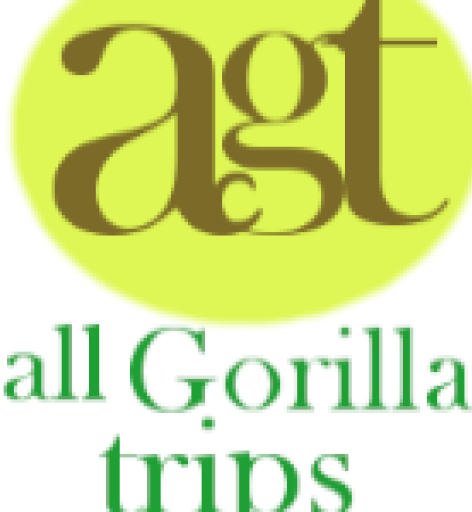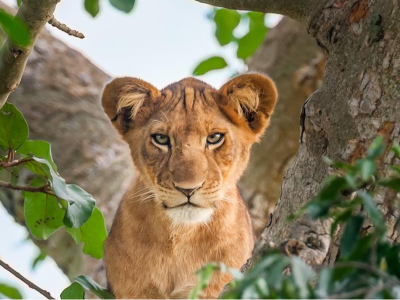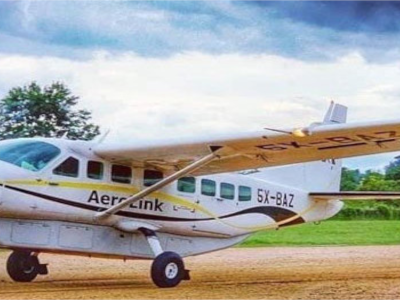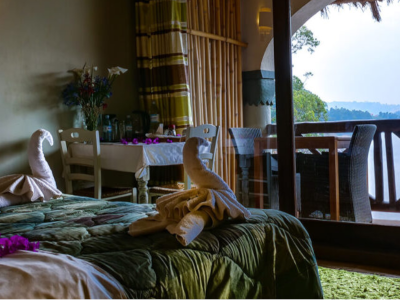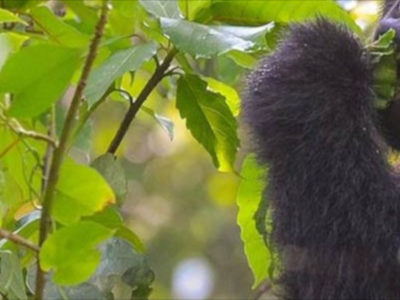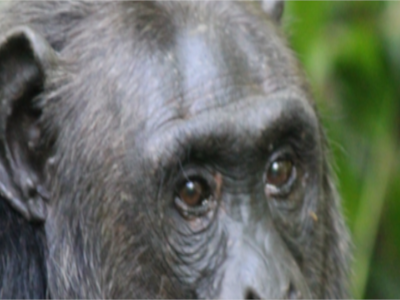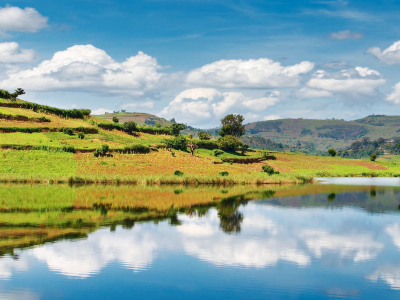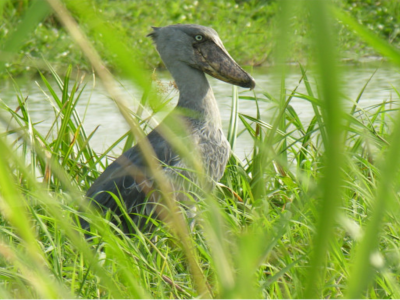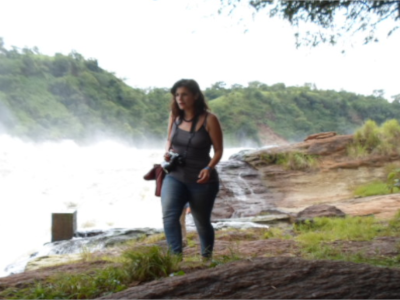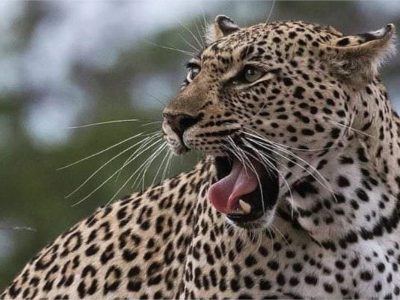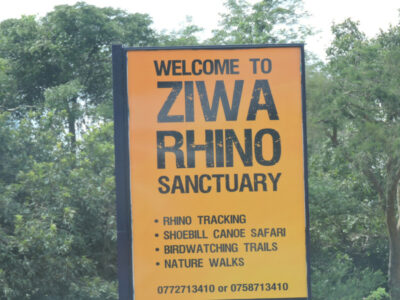Uganda Birding Tour 14 Days
Uganda Birding Tour 14 Days
Uganda Birding Tour 14 days itinerary:
Day 1: Arrival Entebbe
Arrival at Entebbe Airport where you will be welcomed by our representative and transferred to your hotel in Entebbe.
Depending on the time of arrival, stay at Hotel and bird Entebbe Botanical Gardens est. 1898. The gardens host a variety of open woodland species and offer a superb introduction to Ugandan birds.
Target birds: Vereaux's Eagle, Owls, Red-chested Sunbirds, Orange Weaver, Slender-billed, Brown-throated, Yellow-backed, Jackson's Golden-backed, Black-headed and Vieillot's Black Weavers. Around the shore-Long tailed Cormorant, Common Squacco and Black-headed Herons, Hammerkop, African Open-billed Stork, Yellow-billed Duck, Grey-headed Gull, various terns and Pied Kingfisher, Swamp Flycatcher, Rock Pratincoles, Black-headed Gonolek, Red-chested Sunbird, Great Blue Ross' Turacos, Klas' & Dierderik Cuckoos, Woodland Kingfisher, Black-billed Roller, Black & White Casqued Hornbill, Splendid Starling, African Fish Eagle & Eastern Grey Plantain-eater, Angola Swallow, Winding & Red-faced Cisticolas, Grey-capped Warbler, Common Wattle-eye, Green throated & Scarlet-chested Sunbirds.
Overnight The Boma Hotel or Karibu Entebbe
Day 2: Entebbe – Murchison Falls National Park [B, L, D]
Morning transfer to Murchison Falls Park via to Zziwa Rhino Sanctuary. While you track the rhinos, visit the information centre and craft shop, look out for bushbuck, leopard, Uganda kob, oribi, crocodiles, hippo and the other wildlife present on the ranch. The birdlife is abundant, with even the rare shoebill stork present in the Lugogo Swamps. Ziwa Rhino Sanctuary offers peace and tranquillity in beautiful surroundings
This afternoon we will visit the "top of the falls" for your chance to view the magnificence of the Nile. The park is cut into half by the famous River Nile where it has to squeeze itself through the legendary Murchison Falls, an impossibly narrow 7 m gap in a cleft rock creating a powerful explosion of white water. The Falls are believed to be the most powerful natural flow of water anywhere on earth. Superlatives like “awesome” “stupendous” “fantastic” and “wow” have been used to describe this amazing spectacle.
Overnight Pakuba Safari Lodge or Paraa Safari Lodge
Day 3: Murchison Falls National Park [B, L, D]
After an early breakfast, proceed for a game drive. Elephant, Cape buffalo, Rothschild's giraffe, Uganda kob, hartebeest and waterbuck are commonly seen. You may also spot oribi, bushbuck, Bohor reedbuck, bush duiker, warthog and bush pig. Large carnivores include lion, leopard and spotted hyena.
After lunch, go for a boat safari upstream the calm Victoria Nile. En-route, marvel at the toothsome hippos, crocodiles and over this 17 km stretch you may see elephant, waterbuck and Uganda Kob. This is also a zone of many bird species like Goliath heron, Egyptian goose, pelican bee-eater, kingfisher, hornbill, cormorant and the rare shoebill stork. The boat will stop just tens of metres from the sinister, frothing and bubbling base of the falls.
Overnight Pakuba Safari Lodge or Paraa Safari Lodge
Day 4: Murchison Falls National Park [B, L, D]
Drive early to Kaniyo Pabidi sector of Budongo Forest Reserve in Murchison Falls NP. Spend the morning chimpanzee-tracking and birding in Kaniyo Pabidi forest.
In the afternoon you will go for a guided birding walk. With 359 species Budongo Forest Reserve is famous for its biodiversity in birds, including the rare Puvel’s illadopses which is endemic to Budongo Forest. The vast bird forest lies at the edge of the Albertine Rift Valley boasting an impressive bird list of over 350 species.
Target birds: Nathan's Francolin, Cassin's Spinetail, Ituri Batis, Chestnut-capped Flycatcher & Banded Snake-eagle
Overnight Budongo Eco Lodge
Day 5: Murchison Falls – Kibale Forest National Park [B, L, D]
We depart Murchison Falls and head towards Fort Portal. This long journey will be rewarded with stunning views as you pass small villages and local markets. Fort Portal rests in the shadow of the fabled “Mountains of the Moon” and is famous for the many tea plantations. Birding the entrance road to the forest in the late afternoon. Check the scrubby fringes of the overgrown bushes for birds.
Target birds: Scary Francolin, Marsh Tchagra, Grey-headed Olive-back and a host of Seedeaters including Black-bellied Seed Cracker, Fawn-breasted and Black-crowned Waxbills, Green-backed Twinspot and Black & White Manikin & Conspicuous Greenbul.
Overnight: Tturaco Treetops or Chimpundu Lodge
Day 6: Kibale Forest & Bigodi Swamp [B, L, D]
Morning search of chimpanzees and 10 other primates including l' hoestes, red colobus, blues, red-tailed and grey-cheeked mangabey. The guide will provide detailed explanations, not only on primates but on all the forest fauna and flora and will ensure that your walk is both informative and enjoyable. This walk is excellent for viewing bird life and seeing primates at close quarters.
Afternoon visit to Bigodi Wetland Sanctuary to search for smaller mammals and primates. Look out for the rare red colobus monkey and the sitatunga. The guided 4.5km circular trail through the swamp is also one of the best-guided bird trails in East Africa as well as offering a realistic opportunity to see up to six different primate species in a space of a few hours.
Target birds: Red-winged Francolin, Red-chested Flufftail, White-naped Pigeon, Green-breasted Pitta, African Pitta, Joyful Greenbul, Grey-winged Robin, Abyssinian Ground Thrush, Grey-throated Flycatcher, White-bellied Crested Flycatcher, Masked and black-capped Apalises, Uganda Woodland Warbler, Chestnut-winged Starling, Orange-tuffed and Tiny Sunbirds, Grey-headed Olive Back.
Overnight: Tturaco Treetops or Chimpundu Lodge
Day 7: Kibale Forest – Queen Elizabeth National Park [B, L, D]
After breakfast, proceed to Queen Elizabeth National Park following the mystical Ruwenzori Mountain range for much of the journey. A game drive en route may be rewarded with views of lion, elephant, leopard, buffalo, hyena and a variety of antelope species.
In the afternoon enjoy the unique 2 hour boat cruise on the Kazinga Channel and into Lake Edward. This trip passes through possibly the highest concentration of hippos and many animals may be seen drinking at the water's edge. This launch cruise offers an excellent platform for photography, bird watching and game viewing. The prolific bird life is colourful and stupendous with well over 550 resident species.
Target birds: African Morning Dove, Grey-headed Kingfisher, Swamp Flycatcher, Grey-capped Warbler, Black-headed Gonolek, Red-chested Sunbird, Lesser Eurasian Honey Buzzard, Steppe Eagle, Amur Falcon [or Lesser Kestrel during March-April].
Overnight Ihamba Lakeside Safari Lodge or Elephant Hab Lodge
Day 8: Queen Elizabeth National Park [B, L, D]
Two game drives today. Queen Elizabeth National Park's diverse eco-system of grassy plains, tropical forest, rivers, swamps, lakes and volcanic craters is home to an incredible abundance of wildlife. Game drives in this park, with the massive Rwenzoris as a backdrop, provides excellent opportunities to see lion, leopard, giant forest hog, Cape buffalo, elephants, defassa waterbuck, Uganda Kob, Topi and bushbuck. These two game drives and the boat trip (taken prior) are a memorable method of discovering a vast array of Ugandan wildlife.
Lake Kikorongo for the Shoebill in the papyrus swamp adjacent to the lake and Kasenyi track which supports a large flock of Adbim Storks in season, Woolly-necked & Shoe-billed Stork, Raptors, African Harrier Hawk, Martial Eagle & Grey Kestrel. Lion kills attract up to six species of Vulture including Egyptian, Ruppels', Griffon & Lappet-faced.
Target birds: Shoebill, Adbim Storks, Woolly-necked & Shoe-billed Stork, Raptors, African Harrier Hawk, Martial Eagle & Grey Kestrel. Vultures including Egyptian, Ruppels', Griffon & Lappet-faced.
Overnight Ihamba Lakeside Safari Lodge or Elephant Hab Lodge
Day 9: Queen Elizabeth – Bwindi National Park [B, L, D]
Drive to Buhoma the headquarters of Bwindi Impenetrable National Park. The park boasts no fewer than 23 of the 24 Albertine Rift endemics including the spectacular, and globally threatened, African Broadbill and Shelly's Crimsonwing. Bwindi is richest in terms of birds, butterflies and trees. We will bird the camp area in the afternoon. Arrange a guide for the following day.
Target birds: 23 of the 24 Albertine Rift endemics
Overnight Engagi Lodge
Day 10: Gorilla tracking [B, L, D]
Early morning entry into the Gorilla sanctuary. This rainforest is spectacular. It offers a dramatic steeply forested landscape and is incredibly dense, but crisscrossed by numerous animal trails allowing access to tourists. Mammals recorded include the endangered mountain gorilla, rare golden monkey, buffalo, elephant, black-fronted duiker, bushbuck, leopard, giant forest log and others. This park is best known for its fascinating gorillas. The time is taken and the terrain varies according to the movements of this marvellous primates. The thrill of spending time and observing the gorillas is a rare, moving, awesome and exciting adventure. The gorilla is a shy and peaceful animal and it is an unforgettable experience to watch and photograph them as they interact.
Overnight Engagi Lodge
Day 11: Bwindi – Lake Bunyonyi [B, L, D]
Waterfall Trail: From Buhoma head very early into the forest and onto the waterfall trail, one of Bwindi's star avian attractions; the diminutive Pitta-like Short-tailed Warbler may be heard calling in the undergrowth and easily spotted. Also the Red-tailed Bristlebill and the handsome Black-faced Rufous Warbler. Work slowly back along the main track.
Drive to Lake Bunyonyi near Kabale. Kabale is the unofficial capital of the Kigezi region and is a beautiful, mountainous area with steep-sided hills, neatly terraced cultivation and many small lakes. One of the most attractive is Lake Bunyonyi, which is situated on a ridge to the northwest of Kabale. Large and irregular shaped, Lake Bunyonyi features a number of islands and is surrounded by heavily cultivated hillsides. A Dutch-built leper colony used to be located on the largest island. It was relocated in 1969 when the buildings were taken over by a community of disabled people producing crafts. Lake Bunyonyi is the deepest lake in Uganda and one on the very few Bilharzia-free-so-you-can-swim-lakes.
Target birds: Short-tailed Warbler, Red-tailed Bristlebill, Black-faced Rufous Warbler etc.
Overnight Bird’s Nest
Day 12: Lake Bunyonyi [B, L, D]
After breakfast, you can hire a canoe and explore the surroundings from the water surface. Drift quietly to the several small islands and enjoy the rich birdlife. Return for lunch and then take on a Bird Walk in Mukoni Village. Pass small farms and enjoy the spectacular view as you look out for many birds. Generally, 40 to 50 different species may be seen on this walk, including the African Hobby, Black Kite, Swamp Flycatcher, Scarlet-chested, Bronze and Red-chested Sunbirds, White-headed Saw-wing etc.
Overnight Bird’s Nest or Ha’buharo Island Camp
Day 13:Lake Bunyonyi – Mabamba [B, L]
After a calm breakfast, we depart the beautiful lake and head back to the capital city. En route, we will pass the Equator where we will make a stop for photos and souvenir shopping. Late in the afternoon arrival in Kampala.
Overnight Mabamba Lodge
Day 14:Mamba Swamp & Departure [B, L]
Early transfer to Mabamba Swamp, 50 km west of Kampala. Mabamba Swamp is one of the best places to spot the rare Shoebill Stork. But also many other species can be found here, like Allen’s Gallinule, Grey herons, African Water Rail, Goliath, Purple and a variety of egrets and ducks. The best way to enjoy the rich bird life is by canoe.
After this activity, you will continue to Entebbe Airport for your onward flight.
End of the tour
We are sorry, there are no reviews yet for this tour.
